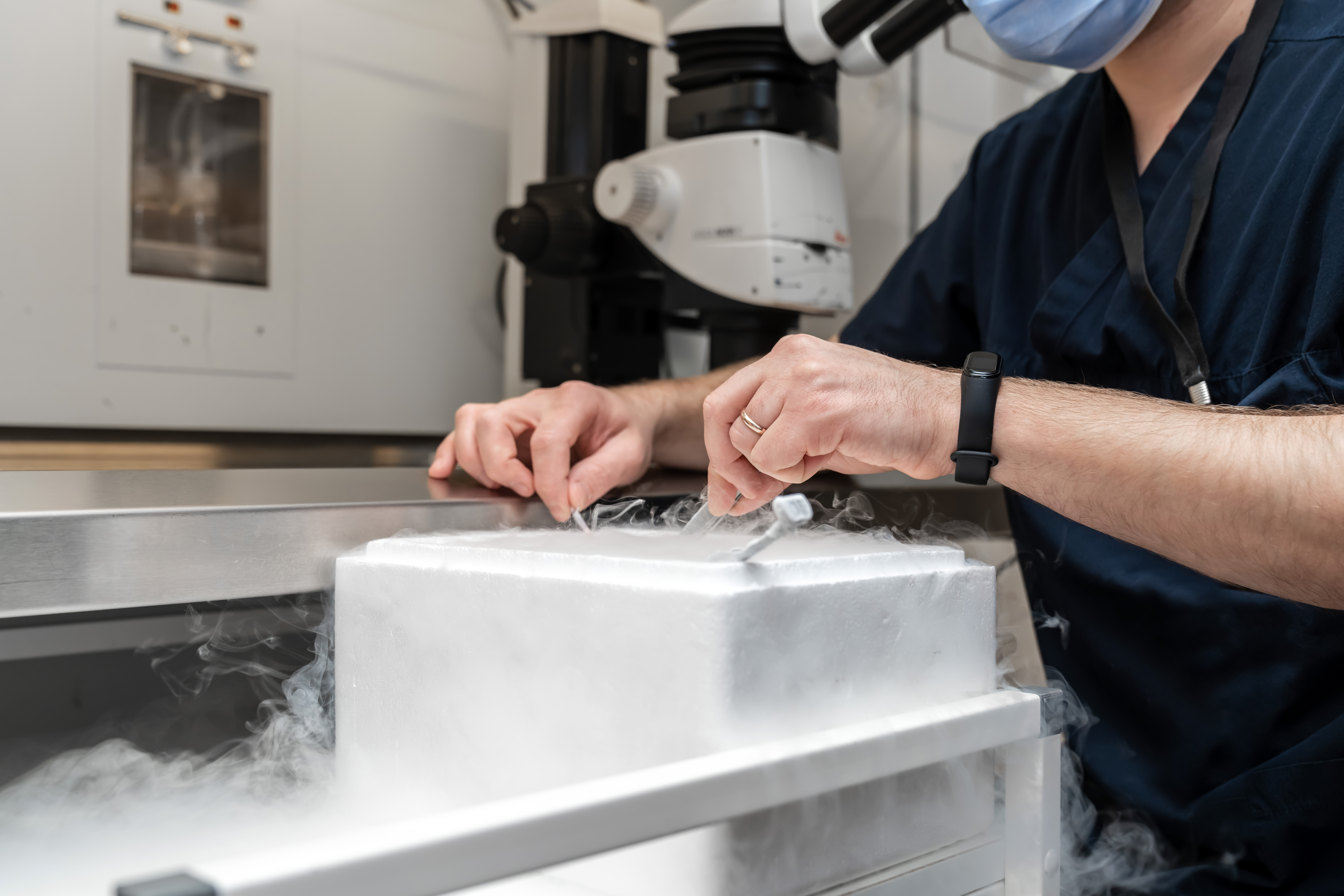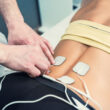Have you ever been told your iron levels are too low, or that you need more magnesium? How about getting a recommendation for a supplement like Trace Mineral Drops or electrolyte powders? Or maybe you’ve attempted to recreate the viral Adrenal Cocktail, which combines natural sources of Vitamin C, potassium, and sodium, and claims to boost your energy levels?
Minerals, including what are referred to as “trace minerals,” are a popular topic of conversation in the holistic health and wellness space. But what, exactly, are minerals– and more specifically, “trace minerals”– and what do they do for our bodies? What role do these elements play in preconception, pregnancy, and postpartum nutritional health, and how can you incorporate them more into your diet? Here, I’ll summarize the most relevant research on trace minerals for preconception, pregnancy, and postpartum nutrition.
Minerals, trace minerals, and electrolytes: what they do for you and how to get more of them in your diet
There are two different kinds of minerals: macrominerals (which our bodies need in larger amounts), and trace minerals (which our bodies need in smaller amounts). Macrominerals are also sometimes called electrolytes, and they include sodium, chloride, calcium, phosphorus, magnesium, and sulfur. These minerals are found in a variety of foods. For example, calcium is in dairy, and sodium is in table salt. Trace minerals can also be found in the diet, but in much smaller amounts. These include iron, manganese, copper, iodine, zinc, cobalt, fluoride, and selenium.
Macro- and trace minerals fulfill many roles in our bodies. For example, they help produce energy (magnesium), maintain proper blood volume and blood pressure (sodium), assist red blood cells in carrying oxygen to the tissues (iron), and help create thyroid hormones (iodine).
In addition to being necessary building blocks of our overall health, both macro- and trace minerals are immensely important for a woman’s reproductive health. They help her to conceive, aid in a healthy pregnancy, and even decrease the likelihood of negative postpartum outcomes.
Preparing for pregnancy: How macro- and trace minerals affect your ability to conceive
If you are preparing for a future pregnancy, you should know that macro- and trace minerals are an important component of preconception health. A 2019 study of trace elements zinc, copper, and selenium found that women who had lower levels of zinc or selenium took a longer time to get pregnant than those who had adequate levels [1]. Those with low selenium also had a greater relative risk for subfertility (inability to conceive despite 12 months of sexual intercourse without condoms or other contraceptives).
If you’re looking to improve your diet to help aid your fertility, consider adding more edible sources of minerals to your plate with nuts, seeds, shellfish, eggs, beans, cocoa, broccoli, cauliflower, Brussels sprouts, Swiss chard, organ meats like beef or chicken liver (yes!) and eggs.
Sodium may affect progesterone production and ovulation
Another recent study analyzed the hormone levels and mineral intakes of 259 cycling women [2]. It found that those with low sodium intake (less than 1500 mg daily) had lower levels of progesterone and increased risk of anovulation, a cycle without ovulation. Low manganese intake was also associated with an increased risk of anovulation. Without ovulation, conception is impossible. Too little progesterone can cause pregnancy loss.
Good sources of manganese include mussels, hazelnuts, pecans, brown rice, chickpeas, pineapple, spinach, soybeans, and bread. Sodium is found in all kinds of salt. The least-processed kinds (think sea salt, Himalayan pink salt) are most likely to retain other trace minerals.
Magnesium and why women are more likely to be deficient than in decades past
Magnesium is another mineral thought to increase fertility, as it helps increase the binding of follicle-stimulating hormone (FSH) [3]. FSH tells one of the ovaries to mature an egg inside a follicle and to produce estrogen. This all happens in the lead-up to ovulation. Unfortunately, many people are low in magnesium due to the relative deficiency in soil thanks to the overutilization of chemical fertilizers and commercial farming practices [4]. Although there are many whole foods sources of magnesium (such as dark, leafy greens and nuts), the levels of magnesium in these foods have decreased over time from the poor soil they grew in.
During pregnancy: How macro- and trace minerals can help you have a healthier pregnancy
Remember how minerals are split up into two categories, macrominerals (electrolytes) and trace minerals? Both types are vital during pregnancy. Let’s first look at electrolytes.
When you’re pregnant, the amount of fluid in your body increases as much as 50%. Fluids in the body need to constantly be in balance with electrolytes, and having deficient amounts of electrolytes during pregnancy may cause pregnancy complications.
Sodium and preeclampsia: Is there a connection?
Have you heard that decreasing your salt intake might help prevent preeclampsia? Actually, research has found that women who consume a more balanced ratio of potassium (a macromineral, or electrolyte) to sodium (rather than very high sodium and low potassium) have decreased levels of severe preeclampsia [5]. Even if they receive a preeclampsia diagnosis, women with balanced sodium to potassium ratios are less likely to have preterm births and babies with low birth weight.
So, should you take it easy with the salt shaker when preparing meals? Not exactly. An uneven sodium-to-potassium ratio is a trademark of a diet largely made up of processed foods or take-out meals. This is very different from using high-quality salt in the context of your home kitchen. Because sodium is also necessary in supporting normal stomach acid levels and promoting digestion, it’s wise to continue to salt food as you normally would, while also increasing potassium-rich foods in your diet. Good sources of Potassium include avocado, spinach, bananas, sweet potatoes, dried fruits, beans, yogurt, and nuts.
How can trace minerals help lower your risk of pregnancy complications?
There is also ample evidence supporting the benefits of trace minerals for positive pregnancy outcomes. A Korean study found that women with high blood serum levels of copper were significantly less likely to have preeclampsia [6]. Similarly, a study of pregnant Chinese women found that low serum levels of trace minerals (the two most prevalent being zinc and iron) were associated with intrauterine growth restriction (IUGR), miscarriage, and preterm delivery [7].
A 2017 research review found that [8]:
- Iron (trace mineral) needs almost double during pregnancy, from 15-17 mg/day to 27 mg/day. Anemia (being deficient in iron) is the most common nutritional deficiency, and it’s strongly related to pregnancy complications like preeclampsia, preterm labor, and premature rupture of the membranes (PROM). Anemia can also negatively affect fetal development.
- Calcium (trace mineral) intake during pregnancy is controversial. Most women who consume dairy will probably not need calcium supplementation while they’re pregnant.
- Iodine (trace mineral) is needed for the baby’s brain development. Pregnant women with even a mild iodine deficiency have a higher risk miscarriage, stillbirth, or having a baby with cognitive development issues.
After pregnancy: How can macro- and trace minerals help postpartum and breastfeeding moms?
Consuming a mineral-rich diet remains important after a woman gives birth. Women deficient in zinc might have a longer labor followed by increased difficulty with breastfeeding [8]. During breastfeeding, many of the minerals consumed by the mother are passed to the nursing infant [9]. Unfortunately, there is little research on how different levels of mineral intake impact lactation or the mineral content of breast milk. Surprisingly, studies on human lactation are still in their infancy (pun intended!).
Mineral consumption may lower postpartum depression risk
Research does strongly suggest minerals might be helpful in preventing postpartum depression (PPD). A 2010 research review found deficiencies in zinc, magnesium, copper, or iron lead to increased risk for PPD, as they all have effects on the brain and behavior [10]. Iron has been specifically shown to be a major player in PPD risk. Too little iron can cause iron deficiency anemia, and other studies have shown that anemic women have a much higher risk for developing PPD [11]. This includes women who were not anemic during pregnancy, but developed anemia after giving birth.
The bad news is that anemia is not only extremely prevalent in women, but is also typically worsened during pregnancy. Iron levels may take another nosedive during childbirth, depending on how much blood you lose. And to top it off, you continue to lose blood and deplete iron stores as you experience lochia (postpartum bleeding) in the days or weeks following birth.
All of this adds up to make postpartum anemia very common. And yet, American guidelines for recommended daily amounts of iron are oddly lower for breastfeeding women than not-pregnant or pregnant women.
How can you increase your mineral intake for preconception, pregnancy, or postpartum nutritional health?
Here are some realistic steps to increase the amount of electrolytes and trace minerals in your diet. As always, discuss any nutrition or supplement changes you make with your healthcare provider.
- Eat whole, unprocessed foods
Real, whole unprocessed foods contain essential minerals and vitamins. Eating a diverse group of animal and plant foods is instrumental in balancing your sodium and potassium levels, plus making sure you receive enough trace minerals. Try some of these numerous mineral-rich foods, as well as the ones mentioned above. Another tip: use unprocessed sea salts instead of white table salt, as unprocessed salts still contain trace minerals. Multiple brands of salt boast trace mineral content in their product.
- Consider supplementation, especially during pregnancy
There might come a time when you and your provider decide that you need additional mineral supplementation, especially during pregnancy. Prenatal vitamins often contain appropriate amounts of the minerals (as well as vitamins and other nutrients) which are key for pregnancy, but you might determine that you want more than your prenatal is giving you. There are plenty of electrolyte powders on the market, as well as products like Trace Mineral Drops that are easy to add into your diet and lifestyle. If you need extra magnesium, you can also try warm (not hot) Epsom salt baths during pregnancy. These allow the body to absorb magnesium through the skin, with the added bonus of being extremely relaxing and soothing for sore muscles!
- After birth, prioritize nourishment
In the postpartum phase, it is vital to prioritize your nourishment, especially if you are also breastfeeding. Eat plenty of foods that are rich in iron and be sure to watch for signs of anemia. Warming, nutrient dense foods and drinks such as soups, broths, and stews, or the spices cinnamon, ginger, and turmeric may help the postpartum mom heal and recover her strength. Pregnancy and birth take a lot from your body, so it’s important to replenish what it has lost by being intentional about your diet postpartum. This is a comprehensive guide to nourishing yourself after giving birth.
The bottom line
No matter whether you are trying to conceive, currently pregnant, or in the postpartum phase, minerals can help you and your baby be healthy and avoid complications. Talk to your healthcare provider about whether mineral supplementation beyond your prenatal might make sense for you. And remember that unprocessed foods from plant and animal sources are your best bet to get the macro-, trace minerals, and vitamins you and your baby need.
References:
[1] Grieger, Jessica A et al. “Maternal Selenium, Copper and Zinc Concentrations in Early Pregnancy, and the Association with Fertility.” Nutrients vol. 11,7 1609. 16 Jul. 2019, doi:10.3390/nu11071609 [2] Kim K, Wactawski-Wende J, Michels KA, Schliep KC, Plowden TC, Chaljub EN, Mumford SL. Dietary minerals, reproductive hormone levels and sporadic anovulation: associations in healthy women with regular menstrual cycles. Br J Nutr. 2018 Jul;120(1):81-89. doi: 10.1017/S0007114518000818. Epub 2018 Apr 20. PMID: 29673411; PMCID: PMC6019139. [3] Ford, K A, and A R LaBarbera. “Cationic modulation of follicle-stimulating hormone binding to granulosa cell receptor.” Biology of reproduction vol. 36,3 (1987): 643-50. doi:10.1095/biolreprod36.3.643 [4] Guo, et al. “Magnesium deficiency in plants: An urgent problem.” The Crop Journal,Vol. 4, no. 2, (2016): pp. 83-91. https://doi.org/10.1016/j.cj.2015.11.003
[5] Yılmaz, Zehra Vural et al. “Dietary sodium and potassium intake were associated with hypertension, kidney damage and adverse perinatal outcome in pregnant women with preeclampsia.” Hypertension in pregnancy vol. 36,1 (2017): 77-83. doi:10.1080/10641955.2016.1239734 [6] Choi, Rihwa et al. “A Prospective Study of Serum Trace Elements in Healthy Korean Pregnant Women.” Nutrients vol. 8,11 749. 23 Nov. 2016, doi:10.3390/nu8110749 [7] Shen, P-J et al. “Four trace elements in pregnant women and their relationships with adverse pregnancy outcomes.” European review for medical and pharmacological sciences vol. 19,24 (2015): 4690-7. [8] Khayat S, Fanaei H, Ghanbarzehi A. Minerals in Pregnancy and Lactation: A Review Article. J Clin Diagn Res. 2017 Sep;11(9):QE01-QE05. doi: 10.7860/JCDR/2017/28485.10626. Epub 2017 Sep 1. PMID: 29207789; PMCID: PMC5713811. [9] Infant and Young Child Feeding: Model Chapter for Textbooks for Medical Students and Allied Health Professionals. Geneva: World Health Organization; 2009. SESSION 2, The physiological basis of breastfeeding. Available from: https://www.ncbi.nlm.nih.gov/books/NBK148970/ [10] Etebary, Sahabeh et al. “Postpartum depression and role of serum trace elements.” Iranian journal of psychiatry vol. 5,2 (2010): 40-6. [11] Wassef, Andréanne et al. “Anaemia and depletion of iron stores as risk factors for postpartum depression: a literature review.” Journal of psychosomatic obstetrics and gynaecology vol. 40,1 (2019): 19-28. doi:10.1080/0167482X.2018.1427725










